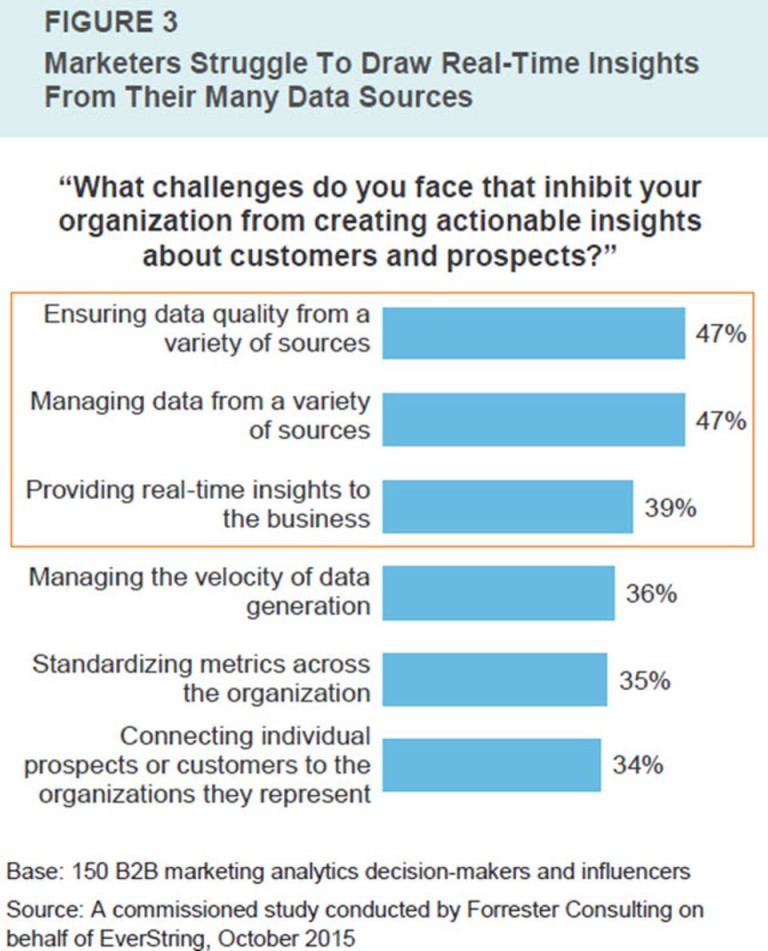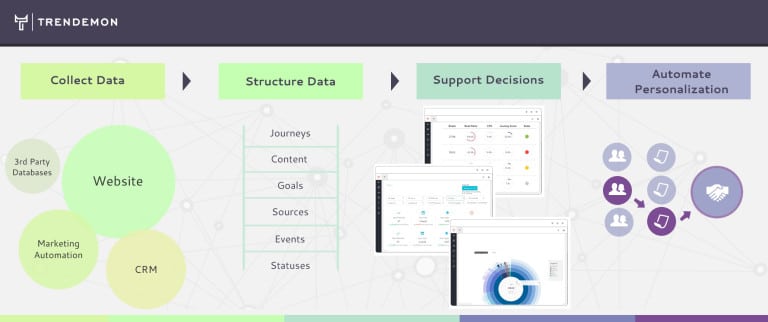What is B2B Data and Why is Important?

B2B data is the backbone of today’s business landscape. It includes critical information like contact details, intent data, and firmographics that help businesses connect with their ideal customer profile (ICP).
In an era where data-driven decisions shape success, accurate and up-to-date B2B data empowers sales and marketing teams to shorten the sales cycle and maximize ROI.
This guide explores the power of B2B data, its applications, and how businesses can harness it to unlock valuable insights for growth. Let’s get started!
What is B2B Data?
B2B data refers to information that businesses use to identify, understand, and engage other companies. It includes a variety of data points that inform critical business decisions.
Key types of B2B data include:
- Firmographic data: Details about a company’s size, revenue, and industry.
- Technographic data: Insights into the tools and technologies a company uses.
- Intent data: Behavioral signals showing purchase intent, like downloads or website visits.
These valuable insights enable sales and marketing teams to target the right audience, personalize campaigns, and improve lead generation strategies. Accurate B2B data ensures better outcomes and saves time by reducing wasted resources.
Why is B2B Data Important?
B2B data is a game-changer for business growth. Why? Because it gives sales and marketing teams the valuable insights they need to connect with their ideal audience.
Here are some key benefits:
- Lead generation: Identify prospects that match your ideal customer profile (ICP).
- Personalized marketing: Use data like job titles and intent signals to craft tailored campaigns.
- Sales enablement: Equip teams with accurate and up-to-date contact details, shortening the sales cycle.
With high-quality B2B data, businesses can reduce wasted time, improve data accuracy, and drive better results. It’s the cornerstone of a data-driven strategy.
“The Answer to the Great Question… Of Life, the Universe and Everything… Is… Forty-two,‘ said Deep Thought, with infinite majesty and calm.”
― Douglas Adams, The Hitchhiker’s Guide to the Galaxy

Sources of B2B Data
B2B data comes from two primary sources:
- First-party data: Collected directly by your business through tools like CRMs, surveys, and website analytics. This data is unique to your B2B marketing databases and often highly reliable.
- Third-party data: Purchased from external B2B data services or platforms like ZoomInfo or Datarade. These sources provide access to extensive B2B data lists, including email addresses, job titles, and more.
Combining these sources ensures a comprehensive, accurate B2B data strategy, helping businesses reduce wasted resources and make better decisions.
The Main Challenges – Data Quality and Structure
A recent Forrester study published on Forbes found that “Marketers most often face the two challenges of ensuring data quality and managing data from a variety of sources (both 47%) in attempting to gain greater insights about customers and prospects.” while “89% of marketers have predictive analytics on their roadmap” (source)

But besides not collecting it, there is another way you can waste your data – collecting it in a way that does not allow ask it meaningful questions. In computer science this is known as ‘garbage in – garbage out’. Here are some examples we encounter with “corrupted data” in online marketing and content marketing:
No distinction between different sections in the site – this makes it impossible to compare the performance of various sections (like your resources section vs. the product features area). To fix this, make sure your different areas are easily identified through the URL.
No separation between people, sessions, goals and actions (all clustered together in groups) – can you connect a single journey to a goals? Can you see that breakdown by sessions, days, sources, events? The higher the abstraction of the data (feel free to geek out here), the easier it is to manipulate and compare different variables.
Lack of proper interface between the different systems in your technology stack – are your services (marketing automation, CRM, analytics, online tools) talking to each other or only to themselves? Make sure that the right interfaces exist and before implementing a new technology that can support your data capital, make sure it can communicate with your other systems.
This brings us back to the unique relationship between data and questions. Before you can tell if you are collecting garbage or gold, you first need to define the questions. Here’s the cycle we use at TrenDemon to leverage our data capital:
Step 1 – Ask Anything
Marketing data can be especially tricky since for it to be meaningful, you need to connect data from several sources, event types and platforms that would allow you to looking at it from several perspectives. But, it also hold great potential for creating unique insights that cannot be generated elsewhere. The only rule – there are no dumb questions. Break complex inquiries to bite-size questions.
For example, connecting marketing and sales data allows building a model which describes your customer’s’ online journey and which sources and touch points along that journey had the most influence.
You can learn which topics customer are actually interested in and use this insight to predict conversions, guide content creation efforts and also future product offerings.
Which sources are effective at exposing your offering to new audiences vs. which channels are more effective and returning an already exposed user.
Step 2 – Ensure your data is collected, structured in an accessible way, and can answer your questions

After you defined the questions, see if you can get those answers from your current data collection and analysis platforms (either through your analytics system, marketing automation or other solutions like TrenDemon).
Once you is the data structured in a way that can be queried to generate meaningful answers. For example, if I want to know how my website’s content area is performing in relation to other parts, we first need to define and tag those areas accordingly.
In cases where the data is not organized or abstracted, it is very difficult to derive insights. Another example is if your goals are not well defined or the data is not readily available, it is impossible to determine the impact of sources or assets on those goals.
Step 3 – Compile Answers from The Data and Form New Questions
The last part is where you can finally start identifying signals from noise. To help you navigate through the information you can use analytics tools. Whatever the answers will be, they will help you either pivot your efforts, optimize or double down on them.
Some of the insights our customers discover when looking at their data is how many people are actually reading the content they spend so much time creating, how many of them continue on to become customers, which call to action perform best on which audience types and how sources that may seemed ineffective before when measured only against conversion rates, are now seen in whole new perspective when looking at their actual customer value.

How to Improve B2B Data Quality
Maintaining accurate B2B data is critical for success. Here’s how to keep your data clean and reliable:
- Regular audits: Schedule periodic reviews to remove outdated entries like old phone numbers or inactive accounts.
- CRM management: Use tools like Salesforce to centralize data and prevent duplication.
- Validation tools: Leverage platforms like NeverBounce to verify email addresses and improve data accuracy.
Clean, up-to-date data saves time, reduces errors, and ensures your sales and marketing teams can focus on valuable opportunities rather than chasing outdated leads.
Leveraging B2B Data for Success
Aligning B2B data with your sales and marketing strategies is the key to unlocking its full potential.
Start by using tools like ZoomInfo for accurate lead generation and Salesforce to integrate data into your CRM. These platforms help identify your ideal customer profile (ICP) and create targeted campaigns.
Additionally, leverage B2B data analytics to track buyer behavior and optimize your approach. For example, use intent data to predict when prospects are ready to buy.
When aligned effectively, B2B data transforms insights into results, driving both efficiency and growth.
Conclusion
B2B data is the cornerstone of modern business success. It drives better decisions, aligns sales and marketing teams, and enhances customer targeting.
Investing in accurate and up-to-date data, combined with analytics tools, ensures long-term growth and efficiency. Businesses that prioritize high-quality B2B company data can maximize ROI, reduce wasted resources, and stay competitive in a data-driven world.
The bottom line? Make your B2B data work smarter for sustainable results.